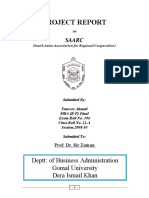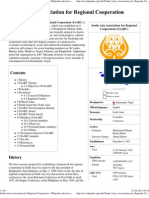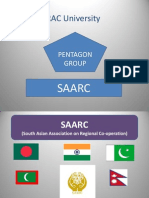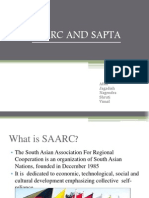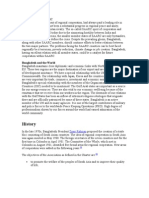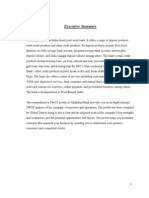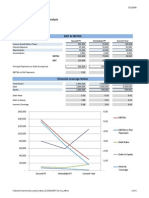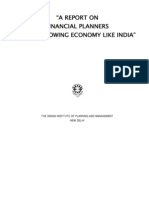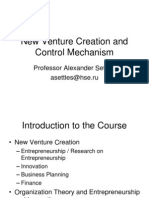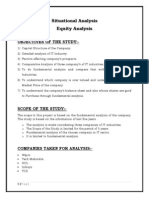SAARC
Uploaded by
Nipul BafnaSAARC
Uploaded by
Nipul BafnaEXECUTIVE SUMMARY
The South Asian Association for Regional Cooperation (SAARC) was established when its Charter was formally adopted on December 8, 1985 by the Heads of State or Government of Bangladesh, Bhutan, India, Maldives, Nepal, Pakistan and Sri Lanka.
SAARC provides a platform for the peoples of South Asia to work together in a spirit of friendship, trust and understanding. It aims to accelerate the process of economic and social development in Member States. The South Asian Association for Regional Cooperation (SAARC) was established when its Charter was formally adopted on December 8, 1985 by the Heads of State or Government of Bangladesh, Bhutan, India, Maldives, Nepal, Pakistan and Sri Lanka. SAARC provides a platform for the peoples of South Asia to work together in a spirit of friendship, trust and understanding It aims to accelerate the process of economic and social development in Member States.
INTRODUCTION
The South Asian Association for Regional Cooperation (SAARC) is an organisation of South Asian nations, which was established on 8 December 1985 when the government of Bangladesh, Bhutan,India, Maldives, Nepal, Pakistan, and Sri Lanka formally adopted its charter providing for the promotion of economic and social progress, cultural development within the South Asia region and also for friendship and co-operation with other developing countries. It is dedicated to economic, technological, social, and cultural development emphasising collective self-reliance. Its seven founding members are Sri Lanka,Bhutan, India, Maldives, Nepal, Pakistan, andBangladesh. Afghanistan joined the organisation in 2007. Meetings of heads of state are usually scheduled annually; meetings of foreign secretaries, twice annually. It is headquartered in Kathmandu, Nepal.
AREAS OF COOPERATION
Agriculture And Rural Biotechnology Culture Economic And Trade Education Energy Environment Finance Funding Mechanism Information, Communication and Media People-to-People Contacts Poverty Alleviation Science and Technology Security Aspects Social Developments Tourism
HISTORY
The first concrete proposal for establishing a framework for regional co-operation in South Asia was made by the late president of Bangladesh, Ziaur Rahman, on 2 May 1980. Prior to this, the idea of regional co-operation in South Asia was discussed in at least three conferences: the Asian Relations Conference in New Delhi in April 1947, the Baguio Conference in the Philippines in May 1950, and the Colombo Powers Conference in April 1954. In the late 1970s, SAARC nations agreed upon the creation of a trade bloc consisting of South Asian countries. The idea of regional co-operation in South Asia was again mooted in May 1980. The foreign ministers of the seven countries met for the first time in Colombo in April 1981. The Committee of the Whole, which met in Colombo in August 1985, identified five broad areas for regional cooperation. New areas of co-operation were added in the following years. It was having 7 members Afghanistan joined in as the 8th member in year 2007. President Rahman addressed letters to the Heads of Government of the countries of South Asia, presenting his vision for the future of the region and the compelling arguments for regional cooperation in the context of evolving international realities. The Foreign Secretaries of seven countries in South Asia met for the first time in Colombo in April 1981 and identified five broad areas for regional cooperation. A series of meetings followed in Nepal (Kathmandu/November 1981), Pakistan (Islamabad/August, 1982), Bangladesh, India (Delhi/July 1983) to enhance regional cooperation. The next step of this process was the Foreign Ministers meeting in New Delhi in 1983 where they adopted the Declaration on South Asian Regional Cooperation (SARC). During the next two years South Asian nations committed themselves to form this South Asian alliance and the process culminated in the First SAARC Summit held on 7-8 December in 1985 in Dhaka where the Heads of State or Government of seven countries, Bangladesh, Bhutan, India, Maldives, Nepal, Pakistan and Sri Lanka adopted the Charter formally establishing the South Asian Association for Regional Cooperation (SAARC).
SAARC CHARTER
Desirous of promoting peace, stability, amity and progress in the region through strict adherence to the principles of the UNITED NATIONS CHARTER and NON-ALIGNMENT, particularly respect for the principles of sovereign equality, territorial integrity, national independence, non-use of force and non-interference in the internal affairs of other States and peaceful settlement of all disputes.
Conscious that in an increasingly interdependent world, the objectives of peace, freedom, social justice and economic prosperity are best achieved in the SOUTH ASIAN region by fostering mutual understanding, good neighbourly relations and meaningful co-operation among the Member States which are bound by ties of history and culture.
Aware of the common problems, interests and aspirations of the peoples of SOUTH ASIA and the need for joint action and enhanced co-operation within their respective political and economic systems and cultural traditions.
Convinced that regional co-operation among the countries of SOUTH ASIA is mutually beneficial, desirable and necessary for promoting the welfare and improving the quality of life of the peoples of the region.
Convinced further that economic, social and technical co-operation among the countries of SOUTH ASIA would contribute significantly to national and collective self-reliance.
Recognising that increased co-operation, contacts and exchanges among the countries of the region will contribute to the promotion of friendship and understanding among their peoples.
Recalling the DECLARATION signed by their Foreign Ministers in NEW DELHI on 2 August 1983 and noting the progress achieved in regional cooperation.
Reaffirming their determination to promote such co-operation within an institutional framework.
Objectives Of SAARC
The objectives and the aims of the Association as defined in the Charter are:
to promote the welfare of the people of South Asia and to improve their quality of life;
to accelerate economic growth, social progress and cultural development in the region and to provide all individuals the opportunity to live in dignity and to realise their full potential ;
to promote and strengthen selective self-reliance among the countries of South Asia; to contribute to mutual trust, understanding and appreciation of one another's problems;
to promote active collaboration and mutual assistance in the economic, social, cultural, technical and scientific fields;
to strengthen co-operation with other developing countries; to strengthen co-operation among themselves in international forums on matters of common interest; and
to co-operate with international and regional organisations with similar aims and purposes.
to maintain peace in the region To encourage Trade, Service, Industry, Small & Medium Enterprise, Agriculture, Intra-Regional through creating strong business linkages amongst the entrepreneurs of the region of South Asia
To make recommendations to safeguard the economic and business interests of the SAARC
To serve as a consultative body of the Private Sector of the region to provide input/ feed back on regional economic issues
To encourage Member Countries to accord preferential terms of trade to each other and finally strive towards the gradual realization of the SAARC Economic and Monetary Union.
5
Principles
Respect for sovereignty, territorial integrity, political equality and independence of all members states
Non-interference in the internal matters is one of its objectives Cooperation for mutual benefit All decisions to be taken unanimously and need a quorum of all eight members All bilateral issues to be kept aside and only multilateral(involving many countries) issues to be discussed without being prejudiced by bilateral issues
Cooperation within the framework of the Association is based on respect for the principles of sovereign equality, territorial integrity, political independence, noninterference in the internal affairs of other States and mutual benefit;
Such cooperation is to complement and not to substitute bilateral or multilateral cooperation;
Afghanistan was added to the regional grouping on April 2007, With the addition of Afghanistan, the total number of member states were raised to eight (8). In April 2006, the United States of America and South Korea made formal requests to be granted observer status. The European Union has also indicated interest in being given observer status, and made a formal request for the same to the SAARC Council of Ministers meeting in July 2006.On 2 August 2006 the foreign ministers of the SAARC countries agreed in principle to grant observer status to the US, South Korea and the European Union.On 4 March 2008, Iran requested observer status.Followed shortly by the entrance of Mauritius. Myanmar has expressed interest in upgrading it's status from an observer to a full member of SAARC, while Russia is interested in becoming an observer.
SAARC SECRETARIAT
Secretariat of the South Asian Association for Regional Cooperation inKathmandu, Nepal The SAARC Secretariat was established in Kathmandu on 16 January 1987 and was inaugurated by Late KingBirendra Bir Bikram Shah of Nepal. It is headed by the Secretary General appointed by the Council of Ministers from Member Countries in an alphabetical order for a three-year term. He is assisted by the Professional and the General Service Staff, and also an appropriate number of functional units called Divisions assigned to Directors on deputation from Member States.[11] The Secretariat coordinates and monitors implementation of activities, prepares for and services meetings, and serves as a channel of communication between the Association and its Member States as well as other regional organisations.[11] The Memorandum of Understanding on the establishment of the Secretariat[11] which was signed by Foreign Ministers of member countries on 17 November 1986 at Bangalore, India contains various clauses concerning the role, structure and administration of the SAARC Secretariat as well as the powers of the Secretary-General. In several recent meetings the heads of state or government of member states of SAARC have taken some important decisions and bold initiatives to strengthen the organisation and to widen and deepen regional co-operation. The SAARC Secretariat and Member States observe 8 December as the SAARC Charter Day1.
MEMBERS OF SAARC
Current members
Afghanistan Bangladesh Bhutan India Maldives Nepal Pakistan Sri Lanka
Observers
Australia[20] China European Union[21] Japan[21] Iran Mauritius[22] Myanmar South Korea United States
Potential future members
China has expressed interest in upgrading its status from an observer to a full member of SAARC. Supported by Pakistan, Bangladesh, Nepal, Maldives, Sri Lanka.
Burma has expressed interest in upgrading its status from an observer to a full member of SAARC.
Russia has expressed interest in becoming an observer of SAARC. Supported By India.
OthersSouth Africa has participated in meetings.
REGIONAL CENTRES
The SAARC Secretariat is supported by following Regional Centres established in Member States to promote regional co-operation. These Centres are managed by Governing Boards comprising representatives from all the Member States, SAARC Secretary-General and the Ministry of Foreign/External Affairs of the Host Government. The Director of the Centre acts as Member Secretary to the Governing Board which reports to the Programming Committee.
SAARC Agricultural Centre (SAC), Dhaka SAARC Meteorological Research Centre (SMRC), Dhaka SAARC Tuberculosis Centre (STC), Kathmandu SAARC Documentation Centre (SDC), New Delhi SAARC Human Resources Development Centre (SHRDC), Islamabad SAARC Coastal Zone Management Centre (SCZMC), Maldives SAARC Information Centre (SIC), Nepal SAARC Energy Centre (SEC), Pakistan SAARC Disaster Management Centre (SDMC), India SAARC Development Fund (SDF), Bhutan SAARC Forestry Centre (SFC), Bhutan SAARC Cultural Centre (SCC), Sri Lanka
10
APEX OR RECOGNIZED BODIES & COUNCIL OF MINISTERS
SAARC has six Apex Bodies, namely, SAARC Chamber of Commerce & Industry (SCCI), SAARCLAW (South Asian Association For Regional Cooperation In Law),[14] South Asian Federation of Accountants (SAFA), South Asia Foundation (SAF), South Asia Initiative to End Violence Against Children (SAIEVAC), Foundation of SAARC Writers and Literature (FOSWAL) Hemant Batra is the current incumbent Secretary General of SAARCLAW. SAARC also has about 17 recognised bodies.
Council of Ministers
Council of Ministers consisting of the Foreign Ministers of the Member States established with the following functions:
Formulation of the policies of the ASSOCIATION Review of the progress of co-operation under the ASSOCIATION Decision on new areas of co-operation Establishment of additional mechanism under the ASSOCIATION as deemed necessary
Decision on other matters of general interest to the ASSOCIATION.
The Council of Ministers meets twice a year. Extraordinary session of the Council may be held by agreement among the Member States.
11
Political issues
The dispute over Kashmirs accession to India has been standing in the way of the lasting peace and prosperity of the Indian subcontinent] While awarding the European Union with the 2012 Nobel Peace Prize, the Norwegian Nobel Committee stated that "...today war between Germany and France is unthinkable. This shows how, through well-aimed efforts and by building up mutual confidence, historical enemies can become close partners." Southern Asia can become unified just as Europe has become unified as the European Union. Political dialogue is often conducted on the margins of SAARC meetings which have refrained from interfering in the internal matters of its member states. During the 12th and 13th SAARC summits, extreme emphasis was laid upon greater co-operation between the SAARC members to fight terrorism. SAARC deals with the overtly unspoken political role of the South Asian Association for Regional Cooperation. It elucidates, first, how saarc has bridged its institutional endowment-deficit as an apolitical organisation with the complex reality of the region that is, the many ways regional cooperation has tackled political issues in the subcontinent. One of the hypotheses developed here is that either occurring on the side or even in opposition to the association's formal workings, the informal and quasi-official political dimension of the organisation is in fact essential to its functioning. A second one is that beyond serving as a political platform for traditional diplomacy, it is offering south Asian leaders and people a new understanding of the region and its politics. Finally, this paper argues that on the basis of sound empirical evidence and the shortcomings of the theoretical frameworks embraced to date, saarc cannot be dismissed as being only an "empty forum".
12
South Asian Free Trade Area (SAFTA)
SAFTA was envisaged primarily as the first step towards the transition to a South Asian Free Trade Area (SAFTA) leading subsequently towards a Customs Union, Common Market and Economic Union. In 1995, the Sixteenth session of the Council of Ministers (New Delhi, 1819 December 1995) agreed on the need to strive for the realisation of SAFTA and to this end an Inter-Governmental Expert Group (IGEG) was set up in 1996 to identify the necessary steps for progressing to a free trade area. The Tenth SAARC Summit (Colombo, 2931 July 1998) decided to set up a Committee of Experts (COE) to draft a comprehensive treaty framework for creating a free trade area within the region, taking into consideration the asymmetries in development within the region and bearing in mind the need to fix realistic and achievable targets. The SAFTA Agreement was signed on 6 January 2004 during Twelfth SAARC Summit held in Islamabad, Pakistan. The Agreement entered into force on 1 January 2006, and the Trade Liberalization Programme commenced from 1 July 2006. Under this agreement, SAARC members will bring their duties down to 20 per cent by 2009. Following the Agreement coming into force the SAFTA Ministerial Council (SMC) has been established comprising the Commerce Ministers of the Member States.
13
SAARC Visa Exemption Scheme
The SAARC Visa Exemption Scheme was launched in 1992. The leaders at the Fourth Summit (Islamabad, 2931 December 1988), while realising the importance of having people to people contacts, among the peoples of SAARC countries, decided that certain categories of dignitaries should be entitled to a Special Travel document, which would exempt them from visas within the region. As directed by the Summit, the Council of Ministers regularly kept under review the list of entitled categories. Currently the list included 24 categories of entitled persons, which include Dignitaries, Judges of higher courts, Parliamentarians, Senior Officials, Businessmen, Journalists, Sportsmen etc. The Visa Stickers are issued by the respective Member States to the entitled categories of that particular country. The validity of the Visa Sticker is generally for one year. The implementation is reviewed regularly by the Immigration Authorities of SAAR Member States.
14
AWARDS & RECOGNITIONS
The Tewelth Summit (Islamabad, January 2004) approved the institution of the SAARC Award to honour and encourage outstanding individuals and organisations within the region. The main objectives of the SAARC Award are:
To encourage individuals and organisations based in South Asia to undertake programmes and activities complementing the efforts of SAARC
To encourage individuals and organisations in South Asia contributing to the improvement of the conditions of women and children
To honour outstanding contributions and achievements of individuals and organisations within the region in the fields of peace, development, poverty alleviation, environment protection and regional co-operation making the SAARC Award the most prestigious Award in the region; and
To honour any other outstanding contributions and achievements, not covered above, of individuals and organisations in the region.
The SAARC Award comprises a gold medal, a letter of citation and cash prize of US $ 25,000. Since institution of SAARC Award in 2004, it has been awarded only once and the Award was posthumoulsy conferred upon Late President Ziaur Rahman of Bangladesh.
SAARC Youth AwardThe SAARC Youth Award is awarded to outstanding individuals from the SAARC region. The award is notable due to the recognition it gives to the Award winner in the SAARC region. The award is based on specific themes which apply to each year. The award recognises and promotes the commitment and talent of the youth who give back to the world at large through various initiatives such as Inventions, Protection of the Environment and Disaster relief. The recipients who receive this award are ones who have dedicated their lives to their individual causes to improve situations in their own
15
countries as well as paving a path for the SAARC region to follow. The Committee for the SAARC Youth Award selects the best candidate based on his/her merits and their decision is final. Previous Winners:
1997: Outstanding Social Service in Community Welfare Mr. Md. Sukur Salek (Bangladesh) 1998: New Inventions and Shanu Dr. Najmul Hasnain Shah (Pakistan) 2001: Creative Photography: South Asian Diversity Mr. Mushfiqul Alam (Bangladesh) 2002: Outstanding contribution to protect the Environment Dr. Masil Khan (Pakistan) 2003: Invention in the Field of Traditional Medicine Mr. Hassan Sher (Pakistan) 2004: Outstanding contribution to raising awareness for TB and/or HIV/AIDS Mr. Ajij Prasad Poudyal (Nepal) 2006: Promotion of Tourism in South Asia Mr. Syed Zafar Abbas Naqvi (Pakistan) 2008: Protecting the Environment in South Asia Ms. Uswatta Liyanage Deepani Jayantha (Sri Lanka)
2009: Outstanding contribution to humanitarian works in the aftermath of Natural Disasters Dr. Ravikant Singh (India)
2010: Outstanding contribution for the Protection of Environment and mitigation of Climate Change Ms. Anoka Primrose Abeyrathne (Sri Lanka)
16
GENERAL SECRETARIES OF SAARC
Abul Ahsan
16 January 1985 to 15 October 1989
Kishore Kant Bhargava
17 October 1989 to 31 December 1991
Ibrahim Hussain Zaki
1 January 1992 to 31 December 1993
Yadav Kant Silwal
1 January 1994 to 31 December 1995
Naeem U. Hasan
1 January 1996 to 31 December 1998
Nihal Rodrigo
1 January 1999 to 10 January 2002
Q.A.M.A. Rahim
11 January 2002 to 28 February 2005
Lyonpo Chenkyab Dorji
1 March 2005 to 29 February 2008
Sheel Kant Sharma
1 March 2008 to 28 February 2011
Fathimath Dhiyana Saeed
1 March 2011 to 11 March 2012
Ahmed Saleem
12 March 2012 to present
17
SAARC SUMMITS
No
Date
Country
Host
Host leader
1st
78 December 1985
Bangladesh Dhaka
Ataur Rahman Khan
2nd 1617 November 1986
India
Bangalore
Rajiv Gandhi
3rd 24 November 1987
Nepal
Kathmandu Marich Man Singh Shrestha
4th 2931 December 1988
Pakistan
Islamabad
Benazir Bhutto
5th 2123 November 1990
Maldives
Mal
Maumoon Abdul Gayoom
6th 21 December 1991
Sri Lanka
Colombo
Ranasinghe Premadasa
7th 1011 April 1993
Bangladesh Dhaka
Khaleda Zia
8th 24 May 1995
India
New Delhi P. V. Narasimha Rao
9th 1214 May 1997
Maldives
Mal
Maumoon Abdul Gayoom
10th 2931 July 1998
Sri Lanka
Colombo
Chandrika Kumaratunga
18
11th 46 January 2002
Nepal
Kathmandu Sher Bahadur Deuba
12th 26 January 2004
Pakistan
Islamabad
Zafarullah Khan Jamali
13th 1213 November 2005
Bangladesh Dhaka
Khaleda Zia
14th 34 April 2007
India
New Delhi Manmohan Singh
15th 13 August 2008
Sri Lanka
Colombo
Mahinda Rajapaksa
16th 2829 April 2010
Bhutan
Thimphu
Jigme Thinley
17th 1011 November 2011[26]
Maldives
Addu
Mohammed Nasheed
18th 2013
Nepal
Kathmandu Khil Raj Regmi
19
CURRENT LEADERS
Image
Title of government
Country
President
Afghanistan
Hamid Karzai
Prime Minister
Bangladesh
Sheikh Hasina
Tshering Tobgay
Prime Minister
Bhutan
Prime Minister
Pakistan
Nawaz Sharif
20
Prime Minister
India
Manmohan Singh
President
Maldives
Mohammed Waheed Hassan
Prime Minister Khil Raj Regmi
Nepal
President
Sri Lanka
Mahinda Rajapaksa
21
LATEST UPDATES
SG addressing the 6th South Asia Economic Summit
September 2, 2013
SIXTH SOUTH ASIA ECONOMIC SUMMIT OPENS IN COLOMBO
The Sixth South Asia Economic Summit opened in Colombo, Sri Lanka, today. The Summit concludes on 4 September 2013. The Summit brings together eminent personalities from academia, government, civil society, private sector and media from the Member States of the South Asian Association for Regional Cooperation (SAARC). It also has participation from experts and resource persons drawn from other organizations and countries. Hosted by the Institute of Policy Studies, an apex think tank of Sri Lanka, the theme of the three-day Summit is Towards a stronger, dynamic & inclusive South Asia. Addressing the Summit, H. E. Mr. Ahmed Saleem, Secretary-General of SAARC stated, South Asia Economic Summits have been an important platform for the South Asian researchers, academicians, businesspersons, government representatives, among others, to exchange views on issues having a direct bearing on economic integration of our region. I am happy to mention that the previous five summits have been instrumental in generating views and ideas for consideration of the policy makers in our region.
I am glad to note that this Summit, which is the sixth in the series, will be devoted to thematic issues as harnessing human capital, managing water resources, food security and climate change, addressing intra-country growth disparities and building competitiveness of the private sector. As all these issues are very pertinent the SAARC process, I remain confident that this Summit will provide a great food for thought for our decision-makers in the region, the Secretary-General said in his Address at the opening of the Summit.
22
Hon. Dew Gunasekera, Senior Minister for Human Resources of Sri Lanka inaugurated the Summit. Hon. Ahsan Iqbal Chowdhury, Federal Minister for Planning of Pakistan delivered a special address at the Summits Inaugural Session. Dr. Saman Kalegama, Executive Director, Institute of Policy Studies of Sri Lanka delivered a welcome statement. Launched in 2008, the South Asia Economic Summit is the premier regional platform for dialogue and debate on socio-economic issues facing South Asia. Each year, the Summit tackles the critical issues, develops new insights, and generates ideas on policy priorities for consideration of the regions decision-makers. The Fifth South Asia Economic Summit was held in Islamabad, Pakistan in September 2012, while the Fourth South Asia Economic Summit was held in Dhaka, Bangladesh, in October 2011.
23
PRESS RELEASES
Inauration of Symposium on Best Practices in Poverty Alleviation in South Asia 2013
October 2, 2013
The Symposium on the Best Practices in Poverty Alleviation opened in Kathmandu today. Organized by the SAARC Secretariat in collaboration with the United Nations Development Proramme (UNDP) under the SAARC-UNDP Partnership Programme, the Symposium brings together the government representatives and community beneficiaries from all the Member States and the representatives of SAARCs development partners, among others, to discuss the core issues related to poverty alleviation in the region. A large number of high ranking officials of the Government of Nepal, Heads of Diplomatic Missions and regional and international organizations in Kathmandu, representatives of civil society and business community and media personnel attended the Inaugural Session organized at Hotel Radisson this morning.
Delivering the Welcome Address at the Inaugural Session of the Symposium, H. E. Mr. Ahmed Saleem, Secretary-General of SAARC recapitulated the initiatives taken by SAARC in reducing poverty in the region. In his address, he made particular references to the directives of the successive SAARC Summits in the area of poverty alleviation. Highlighting the objectives of the Symposium, the Secretary-General stated, The primary purpose of the Symposium is to facilitate the sharing of the best practices in poverty alleviation and to develop strategies to upscale these practices individually or collectively to eradicate poverty from our region. He further said, Following the deliberations at the Symposium, the Compendium on the best practices in poverty alleviation will be published by the SAARC Secretariat. Rt. Hon. Khil Raj Regmi, Chairman of the Council of Ministers of Nepal, inaugurated the Symposium. In his Address, he brought to the fore the ongoing efforts of Nepal in alleviating poverty at the national level. On the occasion, the Rt. Hon. Chairman of the Council of Ministers also launched the SAARC Regional Poverty Profile, 2009-10. The Profile is aimed at sharing of the best practices and experiences towards poverty alleviation in the region. Hon. Dr. Rabindra Kumar Shakya, Vice Chairman of the National Planning Commission of Nepal chaired the Inaugural Session. In his address, the Vice Chairman highlighted the vision of the Planning Commission towards poverty alleviation in Nepal.
24
Hon. Mr. Saumitra Chaudhuri, Member of the Planning Commission of India also addressed the Inaugural Session. In his Address, the Member apprised the participants about the success stories of India in poverty alleviation. Other speakers at the Inaugural Session included Dr. Ponna Wignaraja, Chairman of the South Asian Perspective Network Association of Sri Lanka and the Vice Chairman of the Independent South Asian Commission on Poverty Alleviation; and Ms. Caitilin Wiesen, Manager, UNDP Asia Pacific Regional Centre, Bangkok. In January 2004, the Twelfth SAARC Summit declared poverty alleviation as the overarching goal of SAARC. Since then, the Association has undertaken several measures to free South Asia from poverty. SAARC currently observes the decade, 2006-2015, as the SAARC Decade of Poverty Alleviation.
25
CONCLUSION
The South Asian Association for Regional Cooperation (SAARC) is an economic and political organization of eight countries in Southern Asia. In terms of population, its sphere of influence is the largest of any regional organization. It was established on December 8, 1985 by Bangladesh, Bhutan, Maldives, Nepal, Pakistan, India and Sri Lanka. In April 2007, at the Association's 14th summit, Afghanistan became its eighth member. The South Asian region is blessed with exceptional diversities of natural and human resources including Land forms and climatic regimes ranging from sea level to the highest mountains, and deep gorges; hottest plains to snow clad mountains; wettest to driest places; dissected green Valleys to coral islands. Thousands of rivers and immense hydroelectric potential. Mineral resources such as coal iron, natural gas and, extensive diversities of forest resources including exclusive varieties of animals, herbs and timber. Unfortunately, this vast stock of natural wealth of the region has not been optimally and efficiently managed and utilized for the benefit of the peoples of this region. India has a role to play in the development of region. Its strength in IT field can be used for the development of IT. Similarly, each can offer something to other. This requires collective and collaborative strategies and joint ventures by the countries of this region.
26
You might also like
- Arbitrage Trade Analysis of Stock Trading in NSE and BSE MBA Project100% (3)Arbitrage Trade Analysis of Stock Trading in NSE and BSE MBA Project86 pages
- Globalization of Economics and Development Globalizationof Economics and Development100% (1)Globalization of Economics and Development Globalizationof Economics and Development63 pages
- South Asian Association For Regional Cooperation: History and Evolution of SAARCNo ratings yetSouth Asian Association For Regional Cooperation: History and Evolution of SAARC6 pages
- South Asian: Baguio Conference Colombo Powers ConferenceNo ratings yetSouth Asian: Baguio Conference Colombo Powers Conference22 pages
- Project Report: Deptt: of Business Administration Gomal University Dera Ismail Khan100% (2)Project Report: Deptt: of Business Administration Gomal University Dera Ismail Khan21 pages
- South Asian Association For Regional CooperationNo ratings yetSouth Asian Association For Regional Cooperation4 pages
- South Asian Association For Regional Cooperation (SAARC) : PrinciplesNo ratings yetSouth Asian Association For Regional Cooperation (SAARC) : Principles5 pages
- South Asian Association For Regional Cooperation - Wikipedia, The Free Encyclopedia PDFNo ratings yetSouth Asian Association For Regional Cooperation - Wikipedia, The Free Encyclopedia PDF9 pages
- (South Asian Association For Regional Cooperation) : Group 5No ratings yet(South Asian Association For Regional Cooperation) : Group 522 pages
- South Asian Association For Regional Cooperation (SAARC) : PrinciplesNo ratings yetSouth Asian Association For Regional Cooperation (SAARC) : Principles6 pages
- The South Asian Association For Regional CooperationNo ratings yetThe South Asian Association For Regional Cooperation6 pages
- Saarc and Asean Notes by Umer Rasheed MeerNo ratings yetSaarc and Asean Notes by Umer Rasheed Meer16 pages
- Saarc and Sapta: Afsal Jagadish Nagendra Shruti VimalNo ratings yetSaarc and Sapta: Afsal Jagadish Nagendra Shruti Vimal34 pages
- South Asian Association For Regional CooperationNo ratings yetSouth Asian Association For Regional Cooperation26 pages
- South Asian Association For Regional Cooperation (SAARC)No ratings yetSouth Asian Association For Regional Cooperation (SAARC)39 pages
- Saarc Its Aims Objective and Achievement: A Project OnNo ratings yetSaarc Its Aims Objective and Achievement: A Project On15 pages
- Organization of the Black Sea Economic Cooperation-20 Years of a Successful Regional CooperationFrom EverandOrganization of the Black Sea Economic Cooperation-20 Years of a Successful Regional CooperationNo ratings yet
- Gale Researcher Guide for: Rivalry in Asia-Pacific Regions: APEC and ASEANFrom EverandGale Researcher Guide for: Rivalry in Asia-Pacific Regions: APEC and ASEANNo ratings yet
- Proceedings of the Second South Asia Judicial Roundtable on Environmental JusticeFrom EverandProceedings of the Second South Asia Judicial Roundtable on Environmental JusticeNo ratings yet
- Comparative Study Between Direct Investment in Equity and Through Mutual Fund and ETF - Nipul BafnaNo ratings yetComparative Study Between Direct Investment in Equity and Through Mutual Fund and ETF - Nipul Bafna4 pages
- Comparative Study Between Direct Investment in Equity and Through Mutual Fund and ETF - Nipul BafnaNo ratings yetComparative Study Between Direct Investment in Equity and Through Mutual Fund and ETF - Nipul Bafna4 pages
- Britannia To Restructure Its Top ManagementNo ratings yetBritannia To Restructure Its Top Management28 pages
- Training and Development in Infosys Management EssayNo ratings yetTraining and Development in Infosys Management Essay10 pages
- Britannia To Restructure Its Top ManagementNo ratings yetBritannia To Restructure Its Top Management28 pages
- (Enter Company Name) EBITDA & Financial Leverage Analysis (Enter Date)No ratings yet(Enter Company Name) EBITDA & Financial Leverage Analysis (Enter Date)1 page
- Majority Power and Minority Rights: - by Nipul BafnaNo ratings yetMajority Power and Minority Rights: - by Nipul Bafna2 pages
- Financial Regulation For Growth Equity and Stability in The Post Crisis WorldNo ratings yetFinancial Regulation For Growth Equity and Stability in The Post Crisis World7 pages
- Issues & Considerations in Financial Feasibility: Presented by Group 3No ratings yetIssues & Considerations in Financial Feasibility: Presented by Group 38 pages
- Situational Analysis Equity Analysis: Objectives of The StudyNo ratings yetSituational Analysis Equity Analysis: Objectives of The Study4 pages
- Majority Power and Minority Rights: - by Nipul BafnaNo ratings yetMajority Power and Minority Rights: - by Nipul Bafna2 pages
- Arbitrage Trade Analysis of Stock Trading in NSE and BSE MBA ProjectArbitrage Trade Analysis of Stock Trading in NSE and BSE MBA Project
- Globalization of Economics and Development Globalizationof Economics and DevelopmentGlobalization of Economics and Development Globalizationof Economics and Development
- South Asian Association For Regional Cooperation: History and Evolution of SAARCSouth Asian Association For Regional Cooperation: History and Evolution of SAARC
- South Asian: Baguio Conference Colombo Powers ConferenceSouth Asian: Baguio Conference Colombo Powers Conference
- Project Report: Deptt: of Business Administration Gomal University Dera Ismail KhanProject Report: Deptt: of Business Administration Gomal University Dera Ismail Khan
- South Asian Association For Regional Cooperation (SAARC) : PrinciplesSouth Asian Association For Regional Cooperation (SAARC) : Principles
- South Asian Association For Regional Cooperation - Wikipedia, The Free Encyclopedia PDFSouth Asian Association For Regional Cooperation - Wikipedia, The Free Encyclopedia PDF
- (South Asian Association For Regional Cooperation) : Group 5(South Asian Association For Regional Cooperation) : Group 5
- South Asian Association For Regional Cooperation (SAARC) : PrinciplesSouth Asian Association For Regional Cooperation (SAARC) : Principles
- The South Asian Association For Regional CooperationThe South Asian Association For Regional Cooperation
- Saarc and Sapta: Afsal Jagadish Nagendra Shruti VimalSaarc and Sapta: Afsal Jagadish Nagendra Shruti Vimal
- South Asian Association For Regional Cooperation (SAARC)South Asian Association For Regional Cooperation (SAARC)
- Saarc Its Aims Objective and Achievement: A Project OnSaarc Its Aims Objective and Achievement: A Project On
- Organization of the Black Sea Economic Cooperation-20 Years of a Successful Regional CooperationFrom EverandOrganization of the Black Sea Economic Cooperation-20 Years of a Successful Regional Cooperation
- Gale Researcher Guide for: Rivalry in Asia-Pacific Regions: APEC and ASEANFrom EverandGale Researcher Guide for: Rivalry in Asia-Pacific Regions: APEC and ASEAN
- Proceedings of the Second South Asia Judicial Roundtable on Environmental JusticeFrom EverandProceedings of the Second South Asia Judicial Roundtable on Environmental Justice
- A Handbook on the Ecowas Treaty and Financial InstitutionsFrom EverandA Handbook on the Ecowas Treaty and Financial Institutions
- Comparative Study Between Direct Investment in Equity and Through Mutual Fund and ETF - Nipul BafnaComparative Study Between Direct Investment in Equity and Through Mutual Fund and ETF - Nipul Bafna
- Comparative Study Between Direct Investment in Equity and Through Mutual Fund and ETF - Nipul BafnaComparative Study Between Direct Investment in Equity and Through Mutual Fund and ETF - Nipul Bafna
- Training and Development in Infosys Management EssayTraining and Development in Infosys Management Essay
- (Enter Company Name) EBITDA & Financial Leverage Analysis (Enter Date)(Enter Company Name) EBITDA & Financial Leverage Analysis (Enter Date)
- Majority Power and Minority Rights: - by Nipul BafnaMajority Power and Minority Rights: - by Nipul Bafna
- Financial Regulation For Growth Equity and Stability in The Post Crisis WorldFinancial Regulation For Growth Equity and Stability in The Post Crisis World
- Issues & Considerations in Financial Feasibility: Presented by Group 3Issues & Considerations in Financial Feasibility: Presented by Group 3
- Situational Analysis Equity Analysis: Objectives of The StudySituational Analysis Equity Analysis: Objectives of The Study
- Majority Power and Minority Rights: - by Nipul BafnaMajority Power and Minority Rights: - by Nipul Bafna














